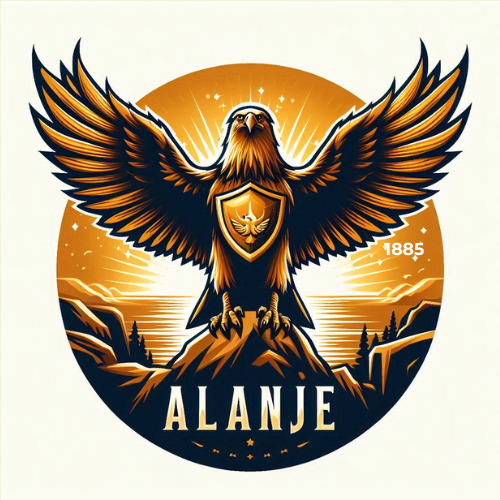
Conquering OLSP Integrations: A Troubleshooting Guide
The OLSP (One Lead System Pixel) system plays a vital role in streamlining various business processes. But when integrations with other systems go awry, it can cause frustrating roadblocks. This blog post equips you with the knowledge and strategies to troubleshoot common OLSP integration issues and keep your systems running smoothly.
Check out our olsp review site: https://olsprockswithalanje.com
Understanding OLSP Integrations and Common Challenges
OLSP integrations allow your core system to connect and exchange data with other applications, automating workflows and improving efficiency. However, these integrations can sometimes encounter challenges:
- Data Mapping Errors: Inaccurate mapping between OLSP fields and external systems can lead to data inconsistencies and failed transmissions.
- Authentication Issues: Improper setup of credentials or security protocols can prevent systems from connecting and sharing data.
- Connectivity Problems: Network outages, firewall restrictions, or API limitations can disrupt communication between OLSP and other systems.
- Version Compatibility Issues: Using incompatible versions of OLSP or the integrated system can cause errors and unexpected behavior.
Check out our olsp review site: https://olsprockswithalanje.com
Laying the Groundwork for Effective Troubleshooting
Before diving into fixes, here are some key points to remember:
- User-Friendly Tools: Look for integration solutions designed with user-friendly interfaces and clear error messages. This empowers you to identify and resolve issues independently.
- Preventative Measures: A proactive approach is crucial. By following best practices, you can minimize the occurrence of integration problems.
Check out our olsp review site: https://olsprockswithalanje.com
Preventing Integration Issues: A Proactive Approach
- Best Practices: During the integration setup, ensure accurate data mapping, proper authentication configurations, and compatibility between systems.
- Regular Maintenance: Schedule periodic checks to verify data integrity, connectivity, and update software versions when necessary.
- Training and Documentation: Train personnel on troubleshooting procedures and maintain clear documentation of integration configurations for future reference.
- Communication is Key: Open communication between teams working with OLSP and integrated systems is essential for identifying and resolving issues swiftly.
Check out our olsp review site: https://olsprockswithalanje.com
Diagnosing Integration Problems: Isolating the Cause
- Initial Steps: When an issue arises, gather details like the nature of the problem, the time of occurrence, and any recent changes made to the system.
- Error Messages: Pay close attention to error messages, as they often provide valuable clues about the source of the problem. Analyze error codes and consult relevant documentation for troubleshooting steps.
- Utilize Resources: Many OLSP integration solutions offer built-in diagnostic tools and troubleshooting guides. Leverage these resources to pinpoint the root cause of the problem.
Check out our olsp review site: https://olsprockswithalanje.com
Case Studies: Learning from Real-World Examples
- Case Study 1: An organization encountered an error message indicating a data mapping issue during an integration process. By reviewing the data mapping configuration, they identified a mismatch between OLSP fields and the external system. Rectifying the mapping resolved the issue.
- Case Study 2: A team noticed a sudden halt in data transfer between OLSP and another system. After investigating, they discovered a scheduled network maintenance window on the external system’s side. Proactive communication with the other team ensured a smooth resumption of data flow after the maintenance window.
Check out our olsp review site: https://olsprockswithalanje.com
Resolving Specific OLSP Integration Issues
- Common Errors: Many integration solutions provide resources for resolving common errors related to data mapping, authentication, and connectivity. Utilize these resources for step-by-step solutions.
- Customization: For complex integration scenarios or unique business needs, consult with OLSP integration specialists to customize the integration and ensure optimal performance.
- Escalating Issues: If the problem persists after applying troubleshooting techniques, escalate the issue to OLSP support for further assistance. Provide detailed information about the error and the steps you’ve taken to resolve it.
Check out our olsp review site: https://olsprockswithalanje.com
Follow-up and Continuous Integration Health
- Post-Resolution: After resolving an issue, document the solution and share it with relevant teams to prevent similar problems in the future.
- Monitoring Integration Health: Continuously monitor the health of your OLSP integrations through regular checks and performance reports. This proactive approach ensures your systems remain healthy and deliver seamless data exchange.
By following these strategies, you can effectively troubleshoot OLSP integration problems, minimize downtime, and ensure the smooth operation of your critical business systems. Remember, a proactive approach and clear communication are key to maintaining a healthy and efficient OLSP integration environment.
Check out our olsp review site: https://olsprockswithalanje.com
If you would like to sign up to OLSP using our affiliate link then click HERE.

+ There are no comments
Add yours